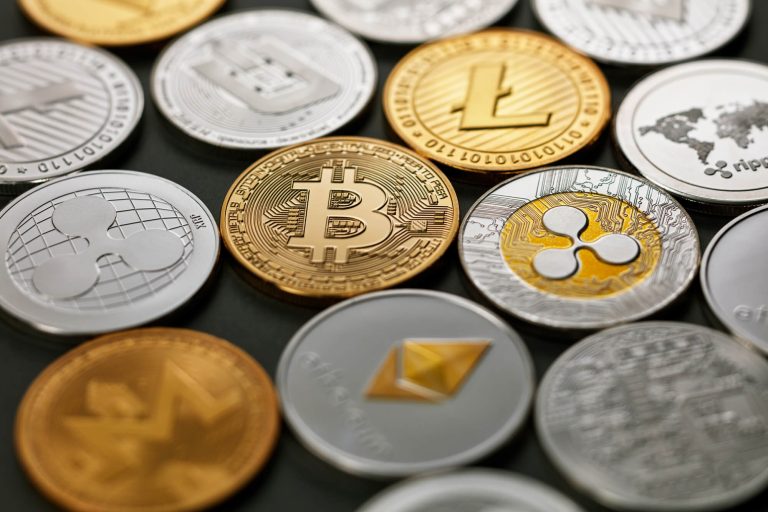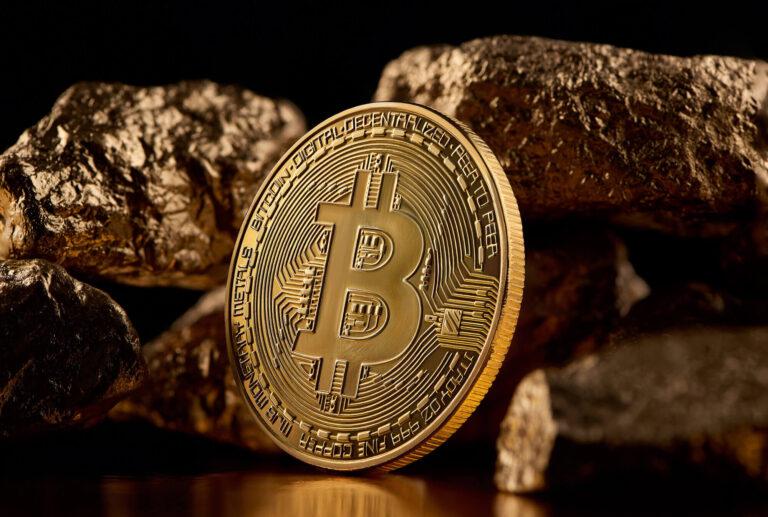The monthly fundamental and price developments of selected cryptocurrencies, including Bitcoin (BTC), Ethereum (ETH), Cardano (ADA), Solana (SOL) and Polygon (MATIC) in collaboration with Swiss digital asset specialist 21Shares AG.
Each month, the research team highlights the cryptocurrencies of the month that have increased or decreased in value by more than 15%. Using a data-driven approach, the key developments and events that led to the price movements are highlighted.
Solana (SOL)
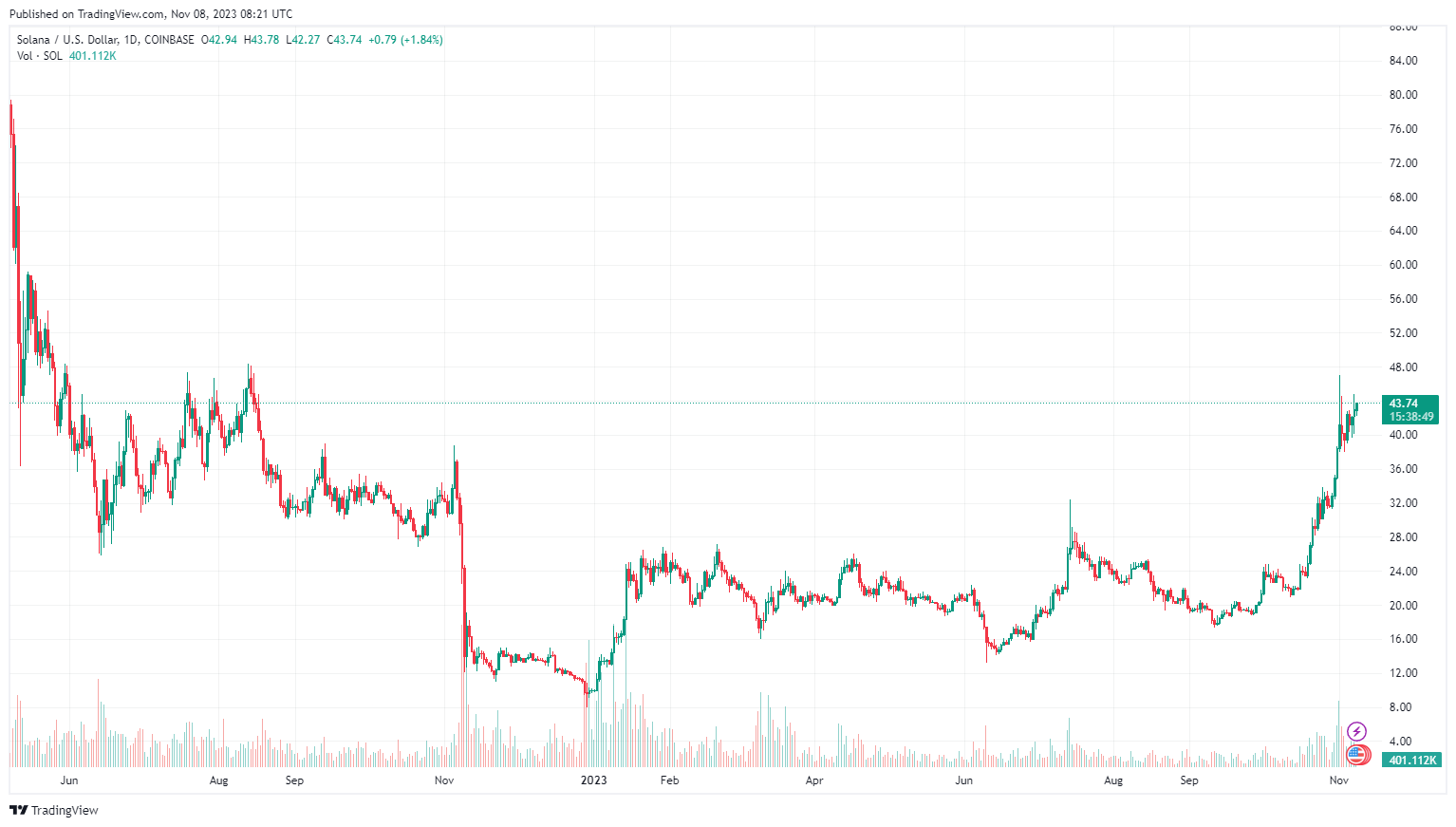
Solana (SOL) rallied 79.90% in October, outperforming the broader market. SOL underperformed for almost two years as it was ridiculed for chain issues and forced selling after the FTX collapse in November 2022. Figure 2 shows that we are witnessing a massive mean reversion, with SOL catching up on relative gains relative to BTC and ETH. Regarding fundamentals, Solana remains one of the most vibrant ecosystems outside of Ethereum, with almost 1,000 monthly active developers, demonstrating that it has retained a loyal community. Crucially, it has also attracted the attention of non-crypto native players like Fintech giants Visa and Shopify. Finally, Breakpoint – the annual gathering of the Solana community – was taking place from October 30 to November 3. Some of the planned programming includes keynotes from industry leaders like Circle, Google Cloud, Visa, and Greenpeace.
Chainlink (LINK)

Chainlink (LINK) rallied 39.17% over the past month as its Cross-Chain Interoperability Protocol (CCIP) continues to gain institutional traction. On October 24, Vodafone's Digital Asset Broker (DAB) announced the results of a proof of concept leveraging CCIP to address "longstanding challenges in the $32 trillion global trade ecosystem." The experiment focused on the seamless exchange of crucial trade documents across various blockchains and Internet of Things (IoT) networks. For instance, a vessel detecting cargo damage could automatically relay data to smart contracts via DAB's platform and CCIP, triggering an insurance process. Increased adoption of CCIP would benefit Chainlink's profitability as the protocol charges a fee on top of the gas cost overhead for every transaction. Since launching in July 2023, Chainlink has earned over $100,000 from CCIP.
Bitcoin (BTC)
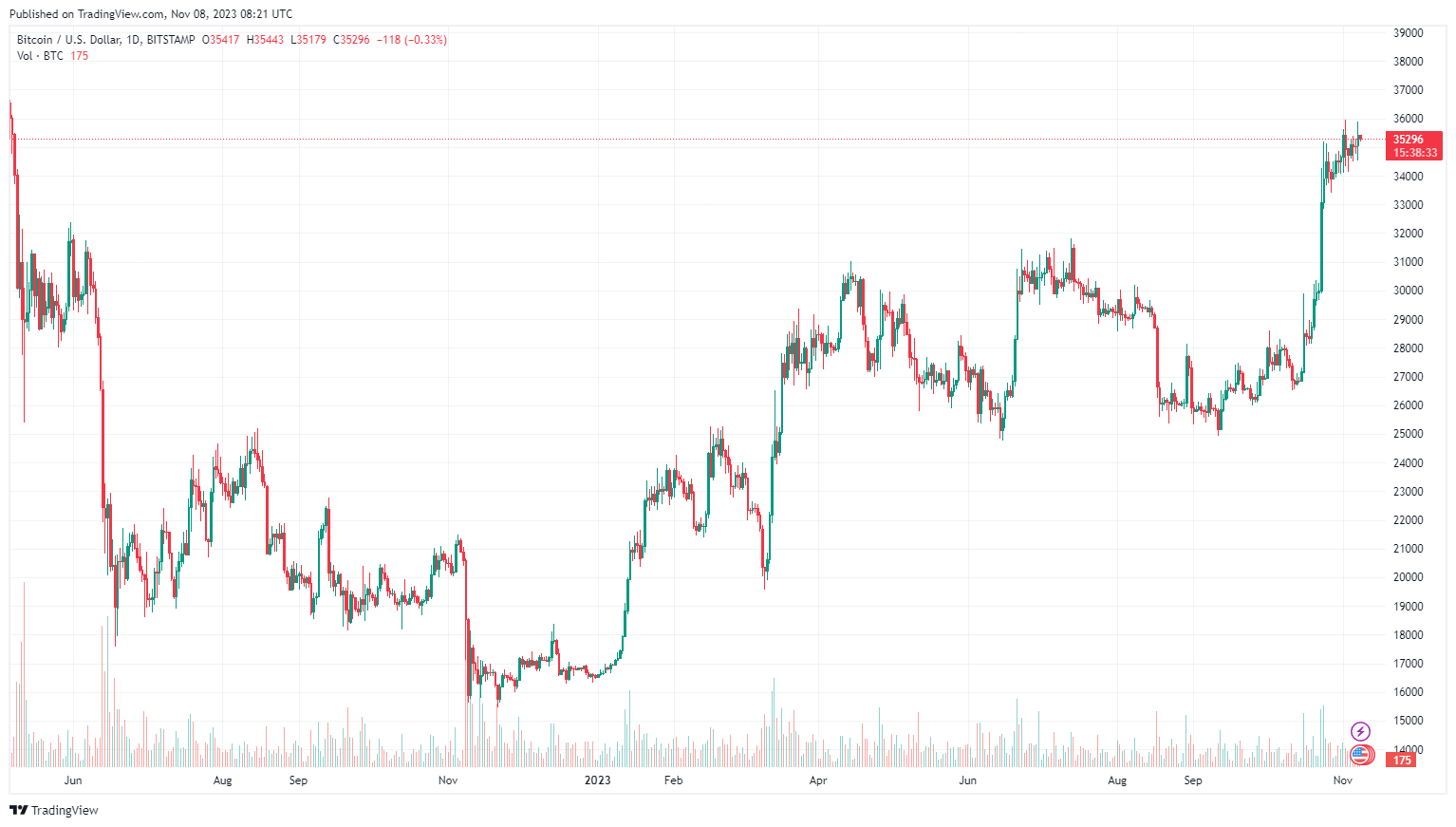
Bitcoin traded up 28.56% over the past month. Bitcoin dominance (i.e., Bitcoin's market cap as a percentage of crypto's total market cap) is above 50%, a figure not seen since April 2021. A rise in Bitcoin dominance has historically correlated to risk-off environments during bear markets. What's unique about today is that we are observing a "flight to quality" not just within crypto but in the context of global markets. Due to its properties as a neutral, international, and censorship-resistant asset, BTC is outperforming at a time when both stocks and bonds have been under pressure. It is shown that the 30-day rolling correlation between BTC and US equities has decreased considerably since the beginning of the year, from ~0.60 to ~0.20. Moreover, its correlation to bonds and gold has turned negative, demonstrating that BTC has its own value drivers that can make it an effective portfolio diversified.
Ethereum (ETH)

Ethereum rose 8.73% in October, underperforming the broader crypto market. In this regard, it's essential to draw a clear distinction between value and price. Value is driven by fundamentals, including cash flows, growth, and risk. On the other hand, price is driven by market sentiment, narratives about "fundamentals," and liquidity. Throughout the past few months, most of the narrative has concentrated on Bitcoin as a hedge against currency debasement and counterparty risk amidst the uncertain macro and geopolitical environment. We have also witnessed many users moving from Ethereum L1 to scaling solutions with their own token (except for Base), which may be a double-edged sword, even if they use ETH as a medium of exchange. Regardless of price performance, Ethereum fundamentals remain more robust than ever, with over 860k validators and $40 billion securing the network.
Cardano (ADA)
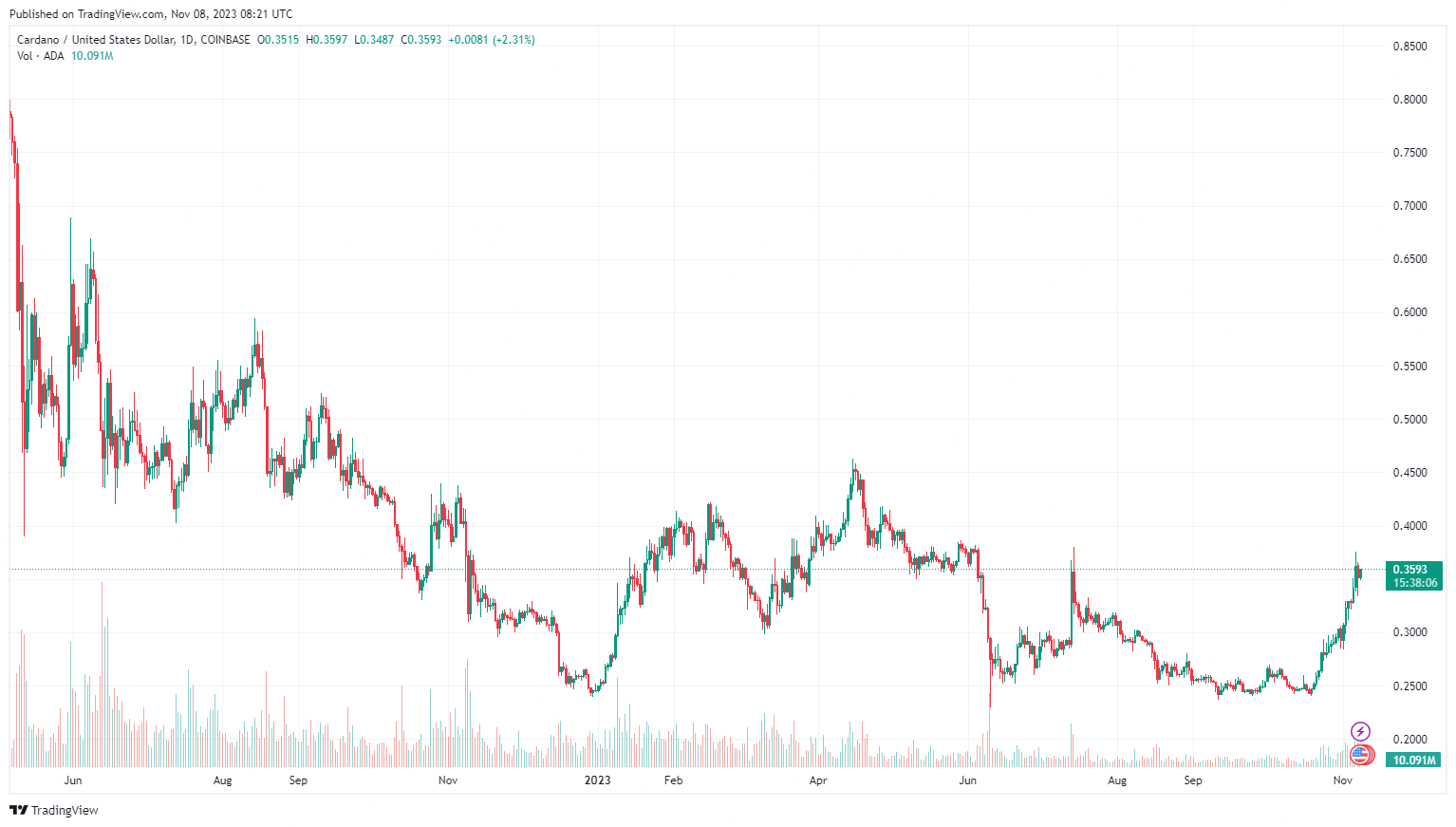
Cardano's native token ADA traded up 15.55% over the past month. Despite its $10 billion market cap, Cardano had only 40.5k daily active users as of October 31, 2023, a fraction of Ethereum-compatible networks like Arbitrum (106k) and Polygon (~359k). To attract new users, Cardano must offer differentiated applications and bridge the education gap to interact with its ecosystem. In this regard, developer engagement will be crucial, as it is a leading indicator of value creation. According to Electric Capital’s Developer Report, Cardano had around 415 monthly active developers as of October 2023, down 24% from October 2022. On a separate note, the Cardano community’s flagship annual conference, Cardano Summit 2023, took place from November 2 to 4.
XRP Ledger (XRP)

XRP traded up 16.49% in the past month. On October 19, XRP registered its highest daily price gain in three months as the U.S. Securities and Exchange Commission (SEC) dropped securities violation charges against Ripple's top executives, Brad Garlinghouse and Chris Larsen. The decision came three months after a U.S. District Court judge deemed that the XRP token, by itself, was not a security under U.S. law and that "programmatic sales" (e.g., XRP sold on exchanges) did not constitute a securities offering.
Polygon (MATIC)
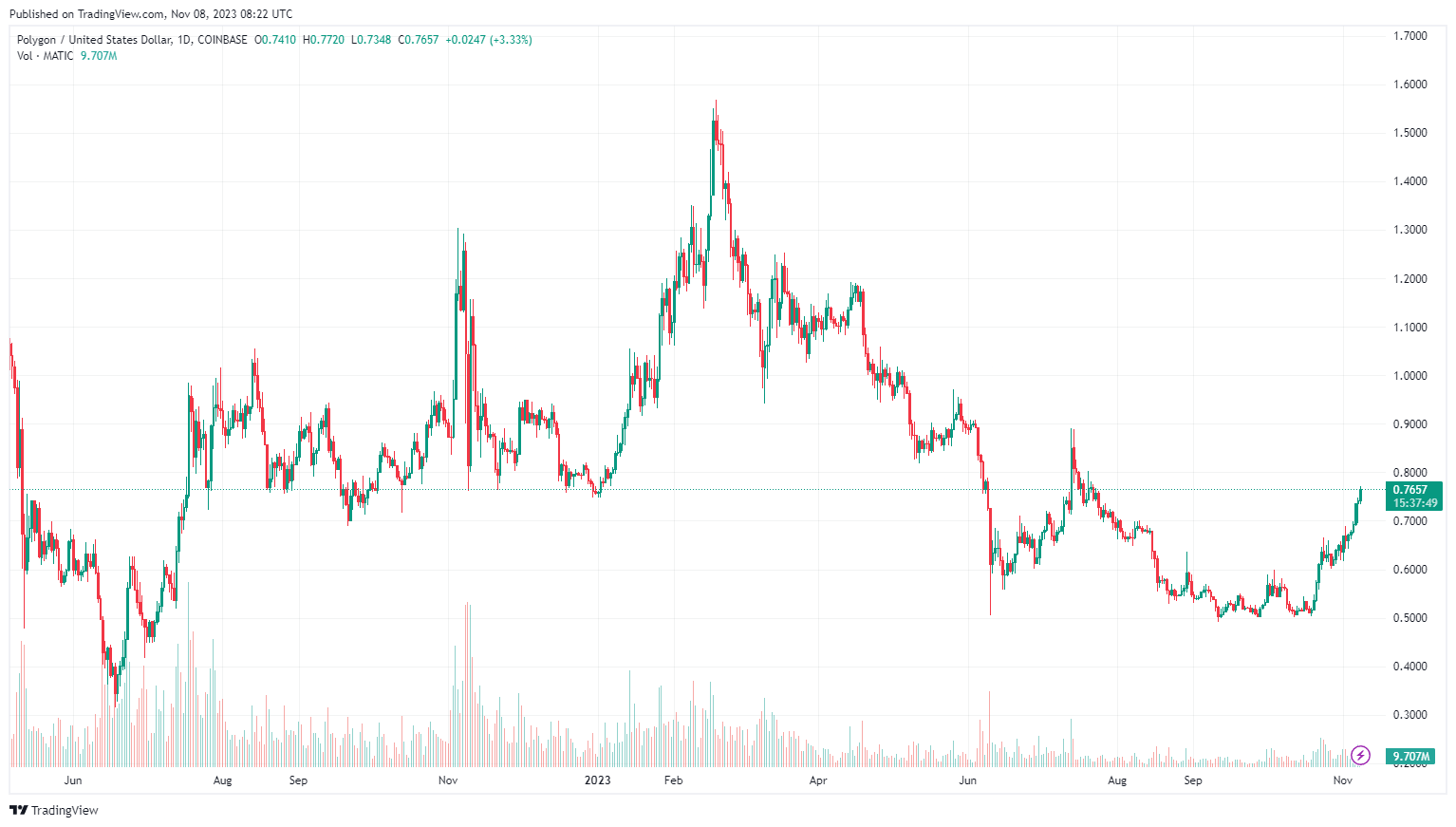
Polygon's native token MATIC traded up 19.38% over the past month. Club Mahindra, a members-only chain of over 125 resorts in India and abroad, launched its first NFT collection on the Polygon blockchain, "Discover India." The collection comprises 25 AI-generated artworks showcasing the beauty of India. Each NFT is available to anyone with an Indian account or credit card, giving the buyer rights to a complimentary two-night holiday voucher for a Club Mahindra resort. On a different note, Polygon Labs and the Solana Foundation co-hosted a crypto policy bootcamp in Washington, D.C., on October 26. Founders, CEOs, investors, and other stakeholders in the space attended the bootcamp, where they learned from policy experts about the current state of crypto legislation in the U.S., different types of advocacy, and how to effectively tell stories about the value of blockchain.
Fantom (FTM)
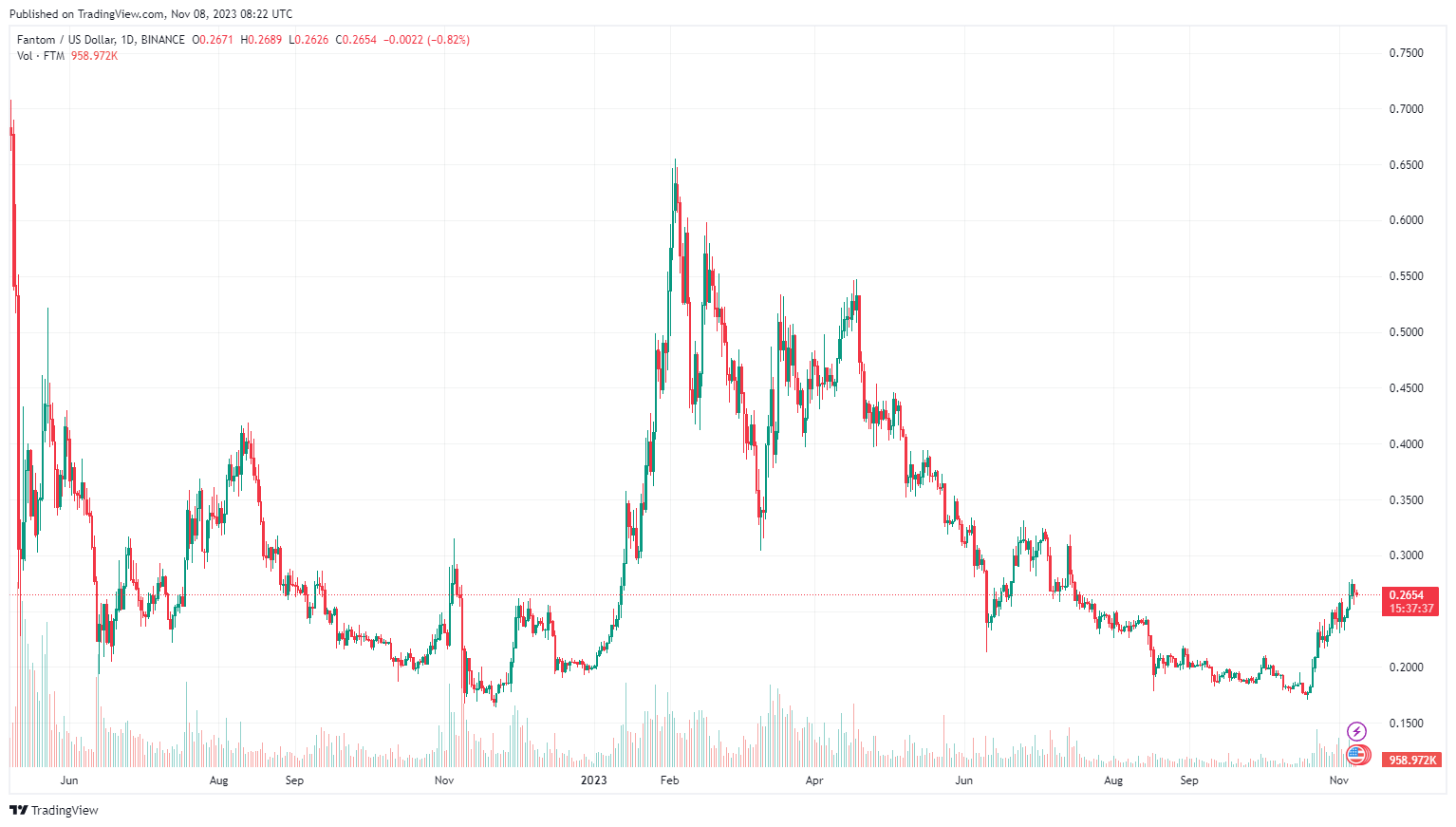
Fantom's native token FTM rose 20.90% over the past month. On October 24, the Fantom Foundation announced the testnet launch of Fantom Sonic, the network's latest upgrade, ahead of its mainnet release in 2024. Sonic is expected to enhance Fantom's throughput to 2,000 transactions per second (TPS) at an average settlement time of one second. While this technological breakthrough is impressive, it does not solve Fantom's primary challenge – its lack of organic demand. Per Artemis data, Fantom had about 25k daily active users as of October 30, a fraction of competing platforms like Arbitrum (106k), Solana (229k), and Polygon (359k). To achieve long-term success, Fantom will have to shift its focus from improving the infrastructure layer to attracting developers that build applications users want.
Avalanche (AVAX)
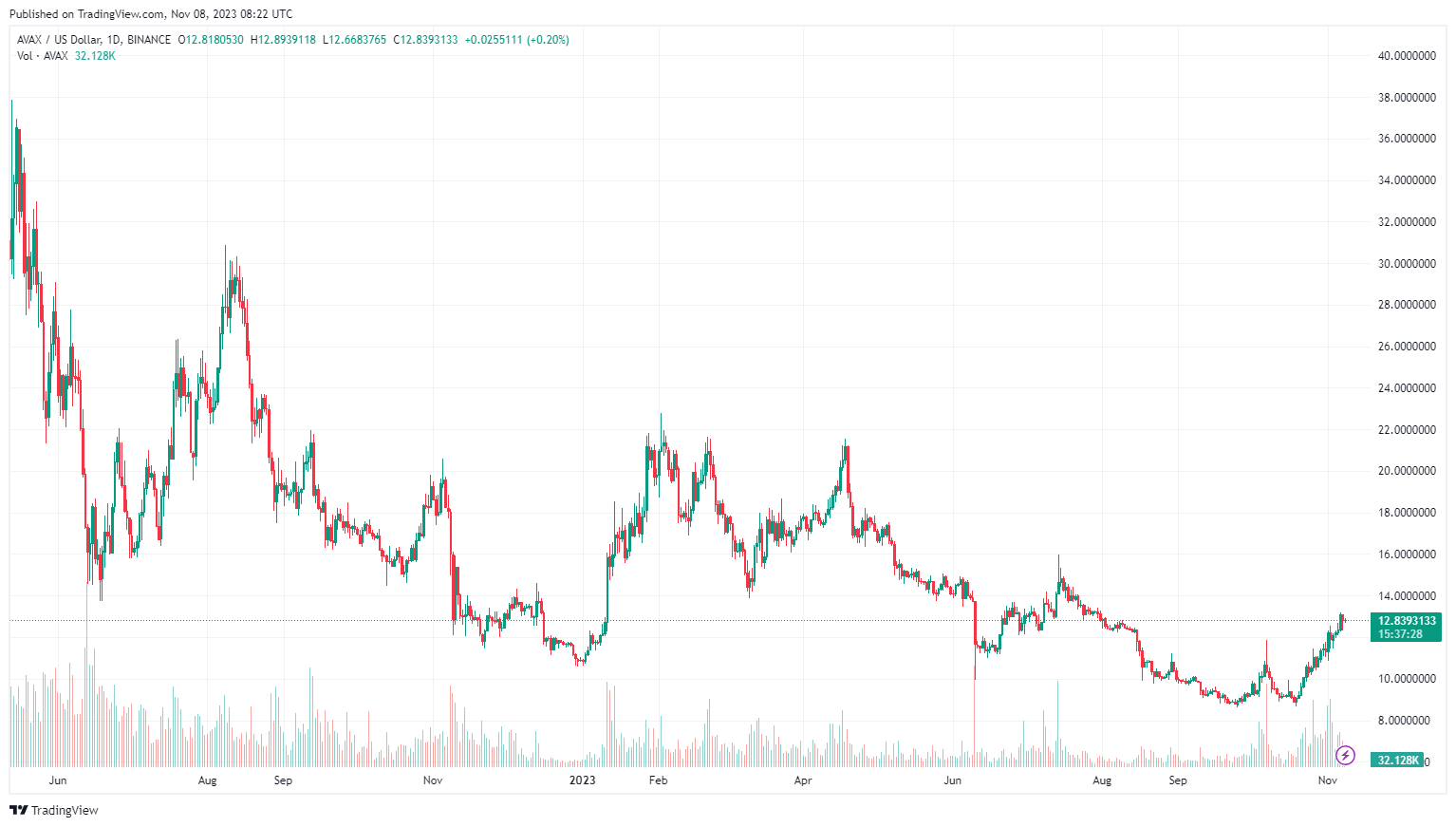
Avalanche's native token AVAX traded up 22.51% over the past month amidst exciting ecosystem developments. SK Planet subsidiary and Korean entertainment giant Dreamus integrated its ticketing platform with Avalanche and SK Planet's UPTN Subnet. The reported 21 million users of the ticketing app "OK Cashbag" can buy Avalanche-based tickets, simplifying the onsite authentication process and solving issues such as ticket counterfeiting. On a less optimistic note, Stars Arena – a social platform built on Avalanche – experienced an exploit that saw 266k AVAX worth ~$2.9 million stolen due to a reentrancy issue. Although the company secured the funding to make users whole, it shows that crypto applications need to drastically improve the user experience and prioritize security to reach mainstream adoption.

